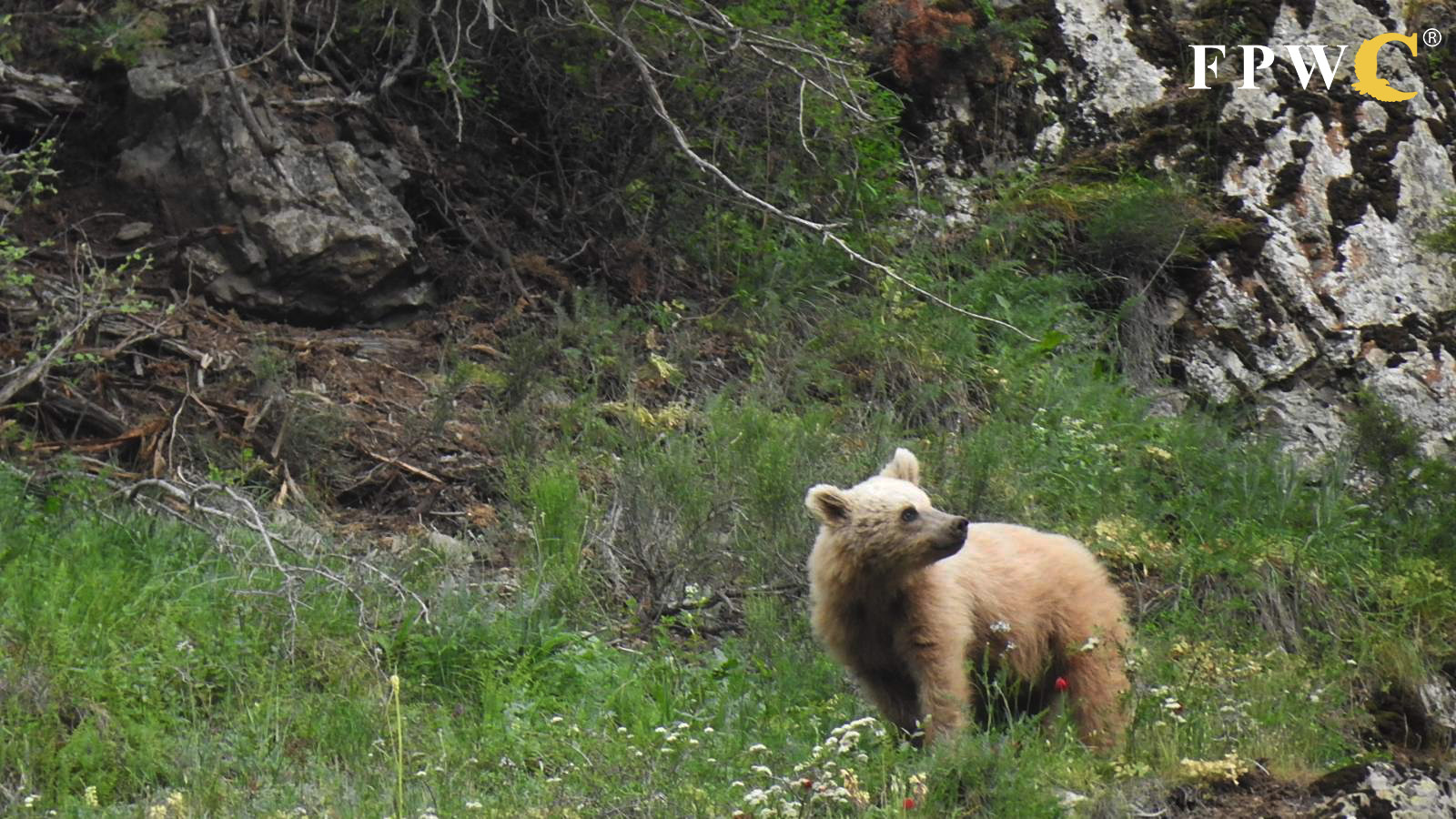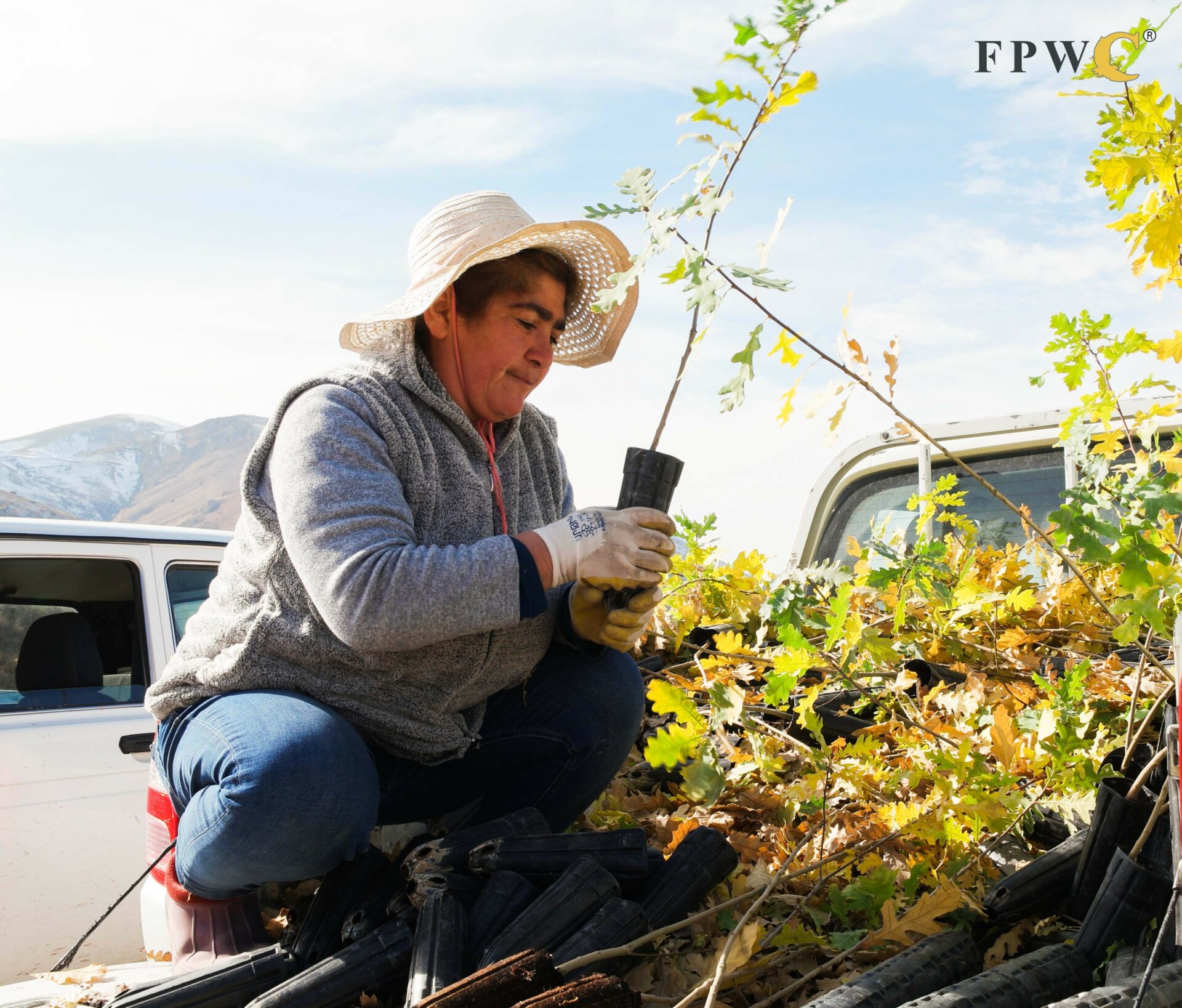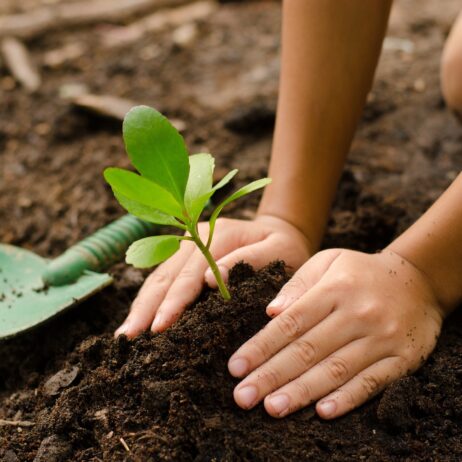
Having successfully grown the seeds, FPWC are now preparing the planting plots and transferring the saplings to their permanent home out in the Caucasus Wildlife Refuge. Credit: FPWC
Spectacular drone footage from our partner Foundation for the Preservation of Wildlife and Cultural Assets (FPWC) shows us the planting of 700,000 trees across the Caucasus Wildlife Refuge in Armenia’s mountain steppe is well underway.
Since the beginning of our Plant a Tree programme, WLT supporters have helped our conservation partners plant 2,742,200 trees around the world. But a forest doesn’t grow just by planting seeds. With our Plant a Tree programme, our golden rules for tree-planting ensure that the trees you help us plant have the best chance of growing into magnificent forests that will stand tall for centuries.
Armenia’s corridor of trees through the mountains
How does it begin? Long before a young tree is placed in the soil, the first decision is where it will be planted to have the best chance and the most benefit. Through years of monitoring, FPWC found the perfect 300-hectare area for tree planting within the vast ring of mountain valleys that make up the Caucasus Wildlife Refuge. The chosen area is a vital biological corridor for 44 of the refuge’s mammal species. The Caucasian Leopard, Armenian Mouflon, Bezoar Ibex, Syrian Brown Bear, and Eurasian Lynx are just some of the species who make migrate through the refuge’s valleys.

These trees help restore deforested land and create habitats for wildlife, regulate climate and water, and providing sustainable livelihoods to local communities. Credit: FPWC
Berries, pears, and olive trees
The next decision is which tree species will be planted in these chosen areas? For this project, FWPC carefully selected seeds that form part of the native forest ecosystem, to restore some of what has been lost in the most natural way possible. The faster growing species such as Wild Almond, Willow-leaved Pear, and Common Barberry will bear fruit in just a few years, providing wildlife with a feast of nuts and berries to sustain them. Others, such as Oriental Hawthorn, Juniper, and Russian Olive will join them. Together, they will provide food, water, and a protected, enduring home for the refuge’s wildlife.
From seed, to sprout, to sapling
How are the trees grown? Each Plant a Tree project is unique, but all our trees are grown from seed to sapling in tree nurseries. They are carefully managed by locally employed people who know the land and will benefit from the restoration. In Armenia, FPWC employs and trains women from the local communities to gather and plant the seeds and care for the shoots. We make sure to replace any seedlings that fail to grow, so you know your donation guarantees a planted sapling.

From collecting seeds, sprouting seedlings, planting saplings, to protecting the young trees, the dedicated staff ensure the donated tree grow into a forest. Credit: FPWC
Plant a Tree Today to Restore Forests for Tomorrow
But the process doesn’t end there. After planting, our Plant a Tree programme ensures that the trees are protected and monitored by dedicated staff for at least 10 years, helping them to reach an age when they can flourish by themselves for years to come.
Alongside the 700,000 trees you can help us plant in Armenia, in Brazil, you can support our partner Reserva Ecológica de Guapiaçu (REGUA) to safeguard and renew some of the last remnants of Brazil’s Atlantic Forest.
And, in India, the trees you can help plant will renew a 200-hectare tract of D’ering-Dibru Saikhowa Elephant Corridor, managed by our partner Wildlife Trust of India (WTI).
Whether for yourself or as a gift, each £5 donation will plant a tree that will have the best chance of thriving in a place where it is most needed, giving hope for nature and wildlife long into the future.


